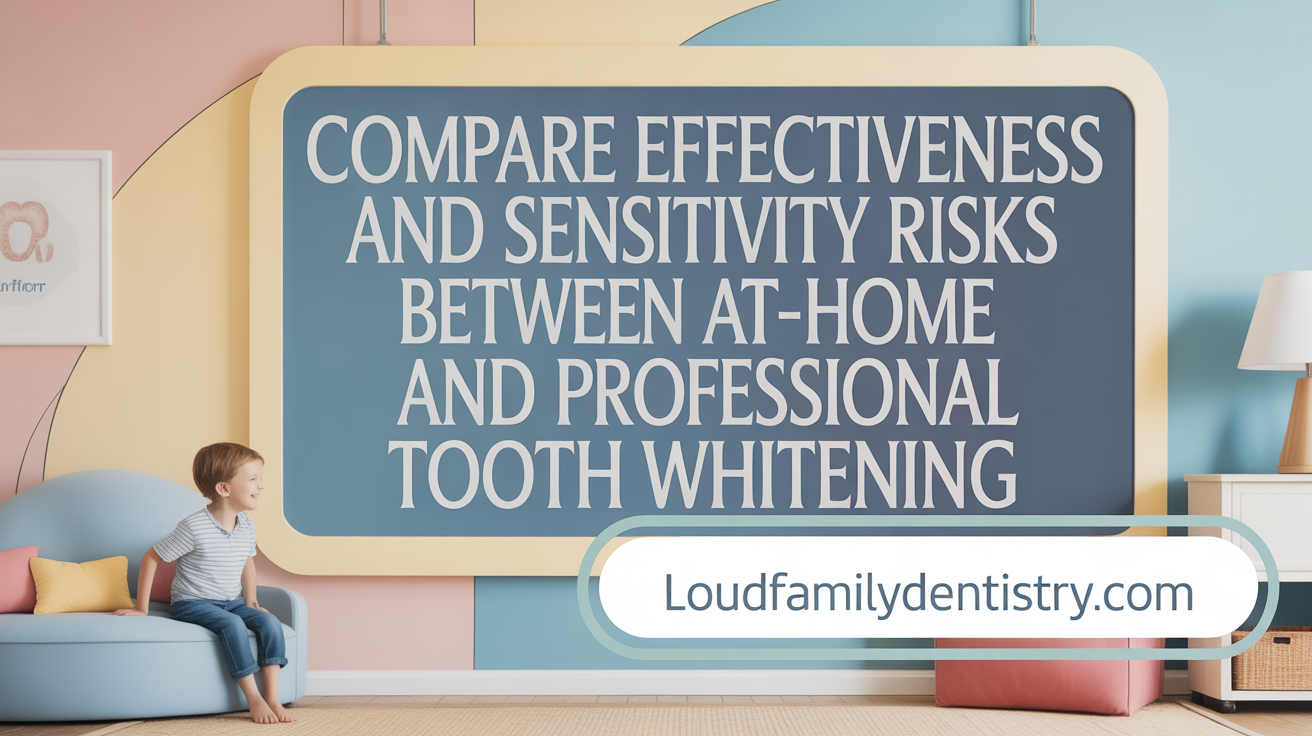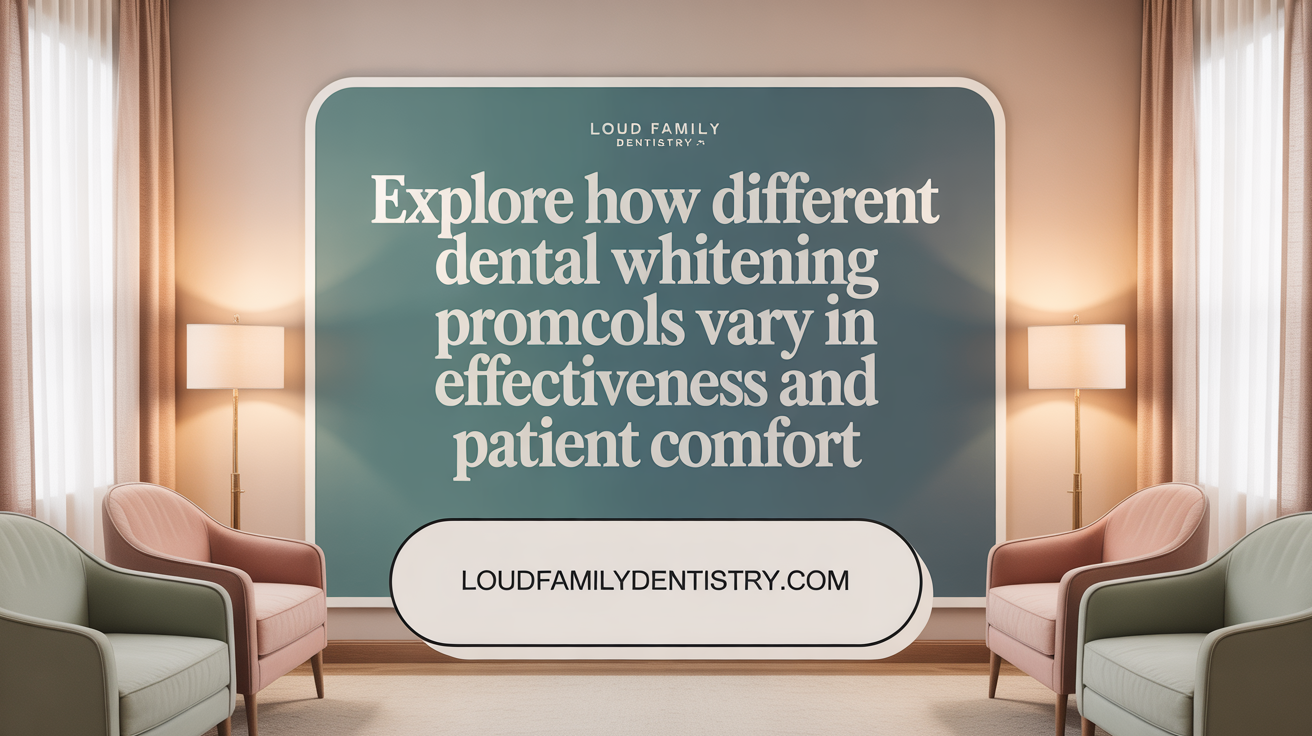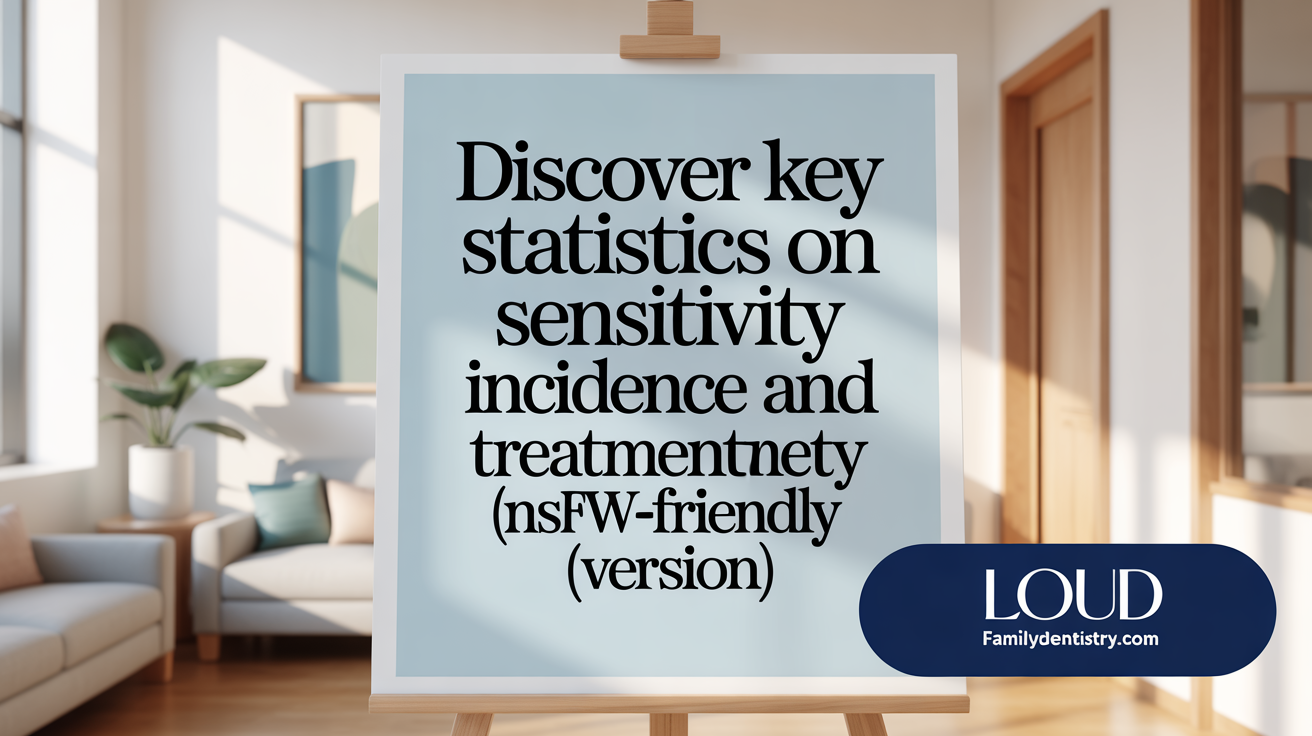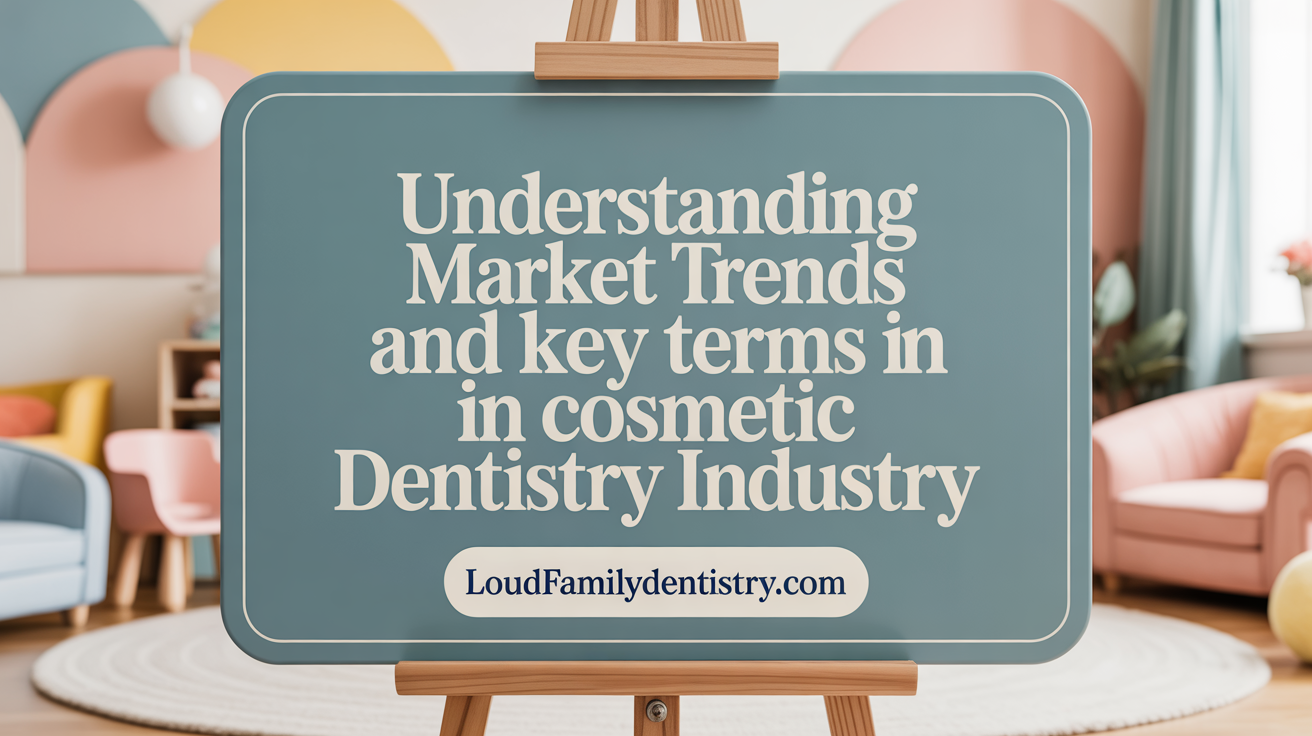Introduction to Teeth Whitening Efficacy and Sensitivity
Teeth whitening remains one of the most sought-after cosmetic dental procedures worldwide, with numerous treatments available ranging from at-home kits to professional in-office protocols. Understanding the balance between achieving effective whitening and managing adverse effects such as tooth sensitivity is crucial for both dental professionals and consumers. This article delves into comprehensive scientific findings and clinical data that highlight the effectiveness of various whitening agents, alongside the prevalence and management of treatment-related sensitivity. By examining randomized controlled trials, clinical studies, and in vitro analyses, we uncover evidence-based insights that assist in making informed decisions on safe and efficacious teeth whitening.
Teeth Whitening: Effectiveness, Sensitivity, and Industry Trends
- Peroxide-based teeth whitening treatments are effective in lightening tooth color in both in-office and at-home settings, with ΔE values around 3.3 for in-office and 2.0 for at-home procedures.
- Sensitivity affects 30% to over 78% of patients during whitening, typically being mild to moderate and resolving within days post-treatment.
- Higher concentrations of peroxide (35% and above) significantly increase sensitivity and risk of gingival irritation, whereas lower concentrations (10% carbamide peroxide) have reduced side effects.
- Clinical trials demonstrate that lower concentration treatments with adjunctive methods like LED or ozone can maximize whitening while minimizing adverse effects.
- The effectiveness of treatments is comparable across a range of peroxide concentrations, with microstructural reversible changes in enamel at high levels.
- Market projections indicate that the tooth whitening industry will surpass USD 10 billion by 2030, driven by consumer demand and cosmetic dentistry advancements.
- The terms **
1. Effectiveness and Sensitivity Incidence in Professional Versus At-Home Whitening Protocols

What is the overall effectiveness of teeth whitening procedures based on scientific data and research?
Scientific research affirms that peroxide-based teeth whitening methods effectively lighten tooth color in both in-office and at-home settings. The degree of whitening is often measured using the ΔE value, which quantifies color change.
In clinical trials, in-office treatments using 40% hydrogen peroxide resulted in higher immediate color shifts, with ΔE values around 3.3, indicating substantial whitening. Conversely, at-home treatments with lower concentrations of carbamide peroxide, such as 16% and 10%, achieved ΔE values of approximately 2.0. Although the immediate color change is more pronounced with higher concentration in-office procedures, lower concentration agents used at home provide comparable results over time.
Importantly, research shows that lower concentration treatments coupled with shorter application times are sufficiently effective, especially when combined with techniques like LED/light activation or ozone application. These combined approaches can maximize whitening while minimizing adverse effects.
What statistical data exists on the prevalence and incidence of sensitivity caused by teeth whitening treatments?
Sensitivity during whitening procedures is quite common, affecting anywhere from 30% to over 78% of patients depending on the treatment specifics. For instance, in clinical trials involving various concentrations of hydrogen peroxide and carbamide peroxide, sensitivity was most prevalent with higher concentrations.
Most cases of sensitivity are mild to moderate, resolving within a few days post-treatment. For example, in a study with 60 participants, sensitivity scores peaked immediately after treatment but generally decreased within 24 hours.
Higher concentrations, such as 35% or above used in-office, significantly increase the likelihood and severity of sensitivity. For example, all subjects receiving 35% hydrogen peroxide experienced tooth sensitivity during clinical trials, and teeth with existing restorations showed more discomfort.
In contrast, lower concentration at-home treatments with carbamide peroxide—such as 10%—demonstrate a substantially reduced sensitivity incidence, with some studies reporting sensitivity in as little as 15% of patients.
Clinical trial data analyzing treatment outcomes
A wide array of clinical trials support the efficacy and safety of peroxide-based bleaching when used correctly. For example, a study with 45 participants comparing different protocols found that all groups achieved similar whitening levels, but sensitivity was more pronounced with higher peroxide concentrations.
In one trial, the application of ozone following hydrogen peroxide enhanced whitening efficacy and reduced sensitivity. Similarly, a combined approach of in-office bleaching with lower concentration hydrogen peroxide and adjunctive treatments such as LED activation or ozone was effective in minimizing adverse effects.
Another significant study involving 100 subjects found that even with variations in concentration—from 15% carbamide peroxide containing fluoride to placebo—the final tooth shade improvement was comparable, with most experiencing only mild sensitivity that subsided quickly.
Role of bleaching agent concentration in efficacy and sensitivity
Research consistently demonstrates that higher peroxide concentrations result in faster and more significant whitening effects but also increase the likelihood and severity of tooth sensitivity.
For example, treatments with 40% hydrogen peroxide in-office achieve rapid ΔE improvements but are associated with greater sensitivity scores during and immediately after treatment.
Conversely, lower concentrations such as 10% carbamide peroxide used at home produce slightly slower but comparable long-term results with fewer reported sensitivity issues.
Table 1 summarizes this relationship:
| Treatment Type | Concentration | Approximate ΔE | Sensitivity Level | Notes |
|---|---|---|---|---|
| In-office | 40% HP | 3.3 | High | Immediate, more discomfort |
| At-home | 16% CP | 2.0 | Moderate | Less sensitivity, longer duration |
| At-home | 10% CP | 2.0 | Mild | Least sensitivity |
This evidence underscores the importance of balancing concentration and application methods to optimize whitening outcomes while minimizing discomfort.
2. Impact of Bleaching Agents, Activation Methods, and Treatment Protocols on Whitening Outcomes and Sensitivity

How do the different whitening methods and agents impact the success rate and side effects of teeth whitening treatments?
Various whitening protocols utilize different bleaching agents, concentrations, and application methods, which influence the overall effectiveness and patient experience. Most studies focus on in-office bleaching with high concentrations of hydrogen peroxide (35%-40%), which provides rapid and noticeable whitening, as evidenced by color change values (ΔE). However, these high-strength agents often come with increased risks of temporary tooth sensitivity and gingival irritation.
Research shows that using lower concentrations of carbamide peroxide or hydrogen peroxide, especially in at-home treatments, results in comparable whitening outcomes but significantly reduces sensitivity. For example, 10% carbamide peroxide, applied over several days, can achieve similar whitening as higher concentrations, with the added benefit of fewer side effects.
Application duration also plays a crucial role. Shorter, controlled contact times minimize enamel changes and discomfort while still achieving effective whitening. Combining different peroxide concentrations with application adjustments can optimize results and comfort.
Recent advancements suggest that adjunctive treatments such as ozone can enhance bleaching effects and reduce sensitivity. When ozone is applied after peroxide, patients experience less sensitivity and achieve better whitening.
What do clinical trials and scientific evaluations reveal about the safety, benefits, and risks of various teeth bleaching techniques?
Clinical studies confirm that proper adherence to manufacturer instructions and controlling peroxide concentration is vital for safe bleaching. Transient tooth sensitivity and oral soft tissue irritation are the most common adverse effects, usually mild and resolving within days.
Aggressive bleaching with high peroxide levels or prolonged contact can cause minor surface alterations to enamel, such as micro-porosity or slight surface softening. However, most of these changes are reversible and do not lead to long-term damage.
Importantly, use of light sources such as violet LEDs has been shown to offer no additional whitening advantage and may increase the risk of sensitivity. Therefore, current evidence advocates for judicious use of activation light, primarily when it enhances efficacy without additional risk.
Safety data also indicate that combined therapies incorporating ozone treatment or shorter application periods with lower peroxide levels can reduce adverse effects while maintaining high whitening efficacy. Overall, the scientific literature underscores that whitening is safe when conducted within recommended protocols, with minimal long-term impacts.
Effects of bleaching agent concentration and application time
| Concentration | Application Time | Effects on Sensitivity | Microstructural Impact | Practical Considerations |
|---|---|---|---|---|
| High (35-40%) | Short (1-2 sessions) | Higher sensitivity | Possible initial surface changes | Effective but with increased sensitivity risk |
| Lower (10-16%) | Longer duration | Less sensitivity | Minimal structural effects | Safer, suitable for home use |
| Very low (6%) | Single or multiple sessions | Minimal sensitivity | Negligible impact | New minimally invasive protocols |
Influence of light or laser activation on efficacy and sensitivity
Although some studies have explored light activation using violet LED or laser sources, evidence suggests no significant benefit in whitening outcome over traditional methods. Moreover, light activation tends to raise sensitivity levels.
Role of ozone adjunct therapy in reducing sensitivity and enhancing whitening
Adding ozone after peroxide treatments can aid in achieving better whitening with less discomfort. Ozone may stimulate tissue healing and mitigate sensitivity, making it a promising adjunct in patient-centered protocols.
Microscopic and structural effects of bleaching on enamel
In vitro studies highlight that aggressive bleaching can cause surface demineralization and microstructural changes in enamel, such as increased porosity and superficial softening. However, these effects are mostly reversible if proper protocols are followed and do not compromise the long-term integrity of enamel.
Safety profiles and patient-reported outcomes from recent clinical trials
Most clinical trials report that side effects are transient and mild. Tooth sensitivity and oral irritation are the most common, often decreasing after 24 hours. Patients report significant aesthetic improvement with high satisfaction levels, regardless of the specific technique used.
| Study Focus | Methodology | Outcomes | Notable Findings |
|---|---|---|---|
| Efficacy of different peroxide concentrations | Randomized controlled trials | Similar whitening results | No significant difference among concentrations |
| Sensitivity analysis | Patient questionnaires & stimuli tests | Increased sensitivity immediately post-treatment | Sensitivity diminishes within days |
| Safety evaluations | Long-term monitoring | Minimal long-term adverse effects | Microstructural changes are reversible |
Overall, current scientific evidence supports the safe use of whitening agents within prescribed guidelines, emphasizing lower peroxide concentrations and shorter application durations to balance efficacy with patient comfort.
Understanding Teeth Whitening: Effectiveness and Common Side Effects

What is the overall effectiveness of teeth whitening procedures based on scientific data and research?
Research consistently shows that peroxide-based tooth whitening treatments are effective in improving the appearance of teeth. In clinical trials, both in-office procedures with high concentrations of hydrogen peroxide (around 35-40%) and at-home treatments with lower concentrations (10-16% carbamide peroxide) achieved noticeable whitening results.
For instance, a study using 40% hydrogen peroxide in-office reported the highest color change shortly after treatment, but at-home treatments with lower peroxide concentrations achieved similar long-term whiteness when used over time. The color change, measured as ΔE units, was significant across all groups, revealing comparable efficacy.
Notably, increasing the concentration of peroxide does not necessarily increase whitening effectiveness beyond a certain point. Treatments with as low as 6% hydrogen peroxide, especially when activated with light like LED or laser, have shown to produce effective results with minimal sensitivity.
Safety data indicates that these treatments, when performed following manufacturer instructions, do not cause significant long-term harm to tooth structure. Minor, reversible surface changes can occur, but these do not compromise dental health.
What are the common side effects and risks associated with teeth whitening, especially dental sensitivity?
The most common side effect of tooth whitening is temporary tooth sensitivity. Various studies report that sensitivity occurs during or shortly after treatment and typically resolves within a few days. In clinical trials, the severity of sensitivity ranged from mild to moderate, with some participants experiencing discomfort during the procedure.
Gingival irritation is another frequent side effect, usually caused by gel contact with soft tissues. It appears within a day of treatment and diminishes quickly.
While more aggressive bleaching, especially with higher concentrations of hydrogen peroxide, can cause surface softening or changes in enamel microstructure, these effects are generally mild and reversible. Sometimes, the use of desensitizing agents such as potassium nitrate or fluoride can reduce sensitivity.
Importantly, the risk of long-term damage to enamel, dentin, or pulp tissue remains low when whitening is done properly. In vitro studies reported surface demineralization only at high peroxide concentrations and with aggressive application, but such effects are minimal under clinical conditions.
Safety considerations based on clinical evidence
Clinical data supports that peroxide-based whitening is safe if instructions are followed precisely. Most side effects are transient and mild. No significant long-term adverse effects, such as deep enamel destruction or pulp damage, have been reported over follow-up periods extending up to three years.
Using lower concentrations of peroxide, shorter application times, and incorporating desensitizing agents can help minimize discomfort.
Furthermore, recent innovations like LED or laser activation with low peroxide concentrations show promising results with even less sensitivity, enhancing the safety profile.
| Aspect | Findings | Details |
|---|---|---|
| Efficacy | High | Both in-office and at-home treatments effectively whiten teeth |
| Sensitivity | Common | Occurs during and after treatment, usually mild |
| Gingival irritation | Transient | Linked to gel contact, resolves quickly |
| Enamel effects | Reversible | Surface changes at high concentrations, minimal damage |
| Long-term safety | Favorable | No significant damage observed in long-term studies |
| Innovations | Promising | Light-activated treatments with lower peroxide doses can reduce sensitivity |
Understanding these aspects helps inform patients and clinicians about the benefits and minimal risks associated with peroxide-based tooth whitening, making it a safe and effective cosmetic procedure when conducted properly.
Statistical Insights into Sensitivity and Safety Profiles of Teeth Whitening Treatments

What statistical data exists on the prevalence and incidence of sensitivity caused by teeth whitening treatments?
Multiple studies provide data on how common sensitivity is during teeth whitening procedures. Generally, sensitivity is reported by over 50% of patients undergoing bleaching, with some studies citing figures around 43.2% experiencing some form of discomfort.
In one clinical trial, approximately 13.8% of participants withdrew from treatment due to sensitivity issues, highlighting its impact on patient compliance. The severity of sensitivity varies, with mild to moderate discomfort being most common, and severe cases arising in a smaller percentage.
Research also shows that sensitivity peaks immediately after treatment and tends to diminish significantly within 24 hours. Complete resolution typically occurs within two weeks, with most patients experiencing either mild or no lingering effects.
A notable correlation has been identified between the presence of gingival recession and increased sensitivity risk. Patients with gum recession are more susceptible to discomfort during bleaching.
These findings emphasize that while sensitivity is common, following proper protocols—such as adjusting peroxide concentration and limiting application time—can greatly reduce its incidence and severity.
How is sensitivity related to peroxide concentration during whitening?
Data clearly indicates a relationship between peroxide concentration and sensitivity levels. Higher concentrations like 35% hydrogen peroxide tend to cause more noticeable sensitivity. For example, in studies involving 35% HP in-office treatments, all patients reported some degree of sensitivity during the procedure.
Conversely, lower concentrations, such as 10% carbamide peroxide used at home, are associated with less pain and discomfort. Studies show that lower peroxide levels, combined with shorter application times, are effective at producing noticeable whitening effects while minimizing adverse sensations.
A retrospective analysis demonstrated that reducing peroxide concentration and application duration reduces the severity and duration of sensitivity without compromising whitening results.
What do long-term safety data and studies say about enamel impact?
Long-term data suggests that whitening treatments, even with higher peroxide concentrations, do not cause significant or lasting damage to enamel or dentin. Most minor changes observed, such as transient surface demineralization or microstructural alterations, are reversible and do not impair tooth strength.
Research indicates no substantial change in microhardness or ultrastructure of enamel following multiple whitening sessions. The risk of pulp damage appears minimal, as peroxide infiltration into the pulp is low and causes only mild, temporary inflammation.
Furthermore, restorative materials like porcelain and gold are unaffected, although composite restorations may show slight, measurable whitening changes and minor chemical interactions in some cases.
What are patient experiences regarding sensitivity and treatment withdrawal?
Patient feedback highlights that sensitivity can influence the overall treatment experience. Studies report that between 10% to 54% of subjects experience mild to moderate sensitivity during or shortly after whitening.
In one notable trial, about 13.8% of participants withdrew due to discomfort, emphasizing that sensitivity can be a limiting factor for some patients.
To improve comfort, some protocols incorporate desensitizing agents like potassium nitrate and fluoride, which have been shown to mitigate sensitivity effectively.
Overall, most patients find that sensitivity diminishes quickly and does not interfere significantly with the whitening process, especially when guidelines for peroxide use are followed.
| Aspect | Findings | Additional Details |
|---|---|---|
| Prevalence of sensitivity | Over 50% | Around 43.2% report some sensitivity, with lower rates for mild cases |
| Severity | Mild to Moderate | Severe cases are less common but notable; withdrawal rates vary |
| Duration | Short-term | Usually resolves within 2 weeks |
| Impact of peroxide concentration | Higher causes more sensitivity | 35% HP in-office > 10% CP at-home |
| Long-term effects | Minimal | No significant enamel damage reported |
| Patient experience | Variable | Improved with desensitizing agents, protocol adjustments |
Market Growth and Terminology Clarifications in Teeth Whitening

What market trends and growth statistics reflect the popularity and economic impact of teeth whitening treatments?
The teeth whitening industry is experiencing consistent expansion, with market projections indicating it will surpass USD 10 billion by 2030. This growth is fueled by increasing aesthetic consciousness among consumers, advances in cosmetic dentistry, and the enhanced accessibility of at-home whitening kits. Especially in the Asia Pacific region, the demand is forecast to grow at a faster pace, driven by rising disposable incomes and greater awareness of cosmetic procedures.
Data from recent industry reports show that global sales of teeth whitening products are rising annually, reflecting a robust consumer interest. The convenience of do-it-yourself treatments combined with professional in-office procedures contributes to a diverse market that caters to different preferences and budgets.
What distinguishes teeth whitening from dental bleaching, and are these terms interchangeable in scientific literature?
In the context of dental care, "teeth whitening" is a broad term encompassing various techniques aimed at improving the appearance of teeth. This includes mechanical methods like polishing and removal of surface stains, as well as chemical methods that alter the intrinsic color of the tooth.
Dental bleaching, on the other hand, is a specific subset of whitening that involves the use of chemical agents—primarily hydrogen peroxide or carbamide peroxide—to lighten the enamel beyond its natural shade. It is usually performed under professional supervision or with specially formulated over-the-counter products.
While the terms are often used interchangeably in casual conversation and some literature, it's important to recognize that bleaching refers specifically to chemical processes that lighten the teeth. Scientifically, this distinction clarifies the method employed and helps set appropriate expectations regarding results and potential sensitivities.
| Term | Definition | Usage Context |
|---|---|---|
| Teeth Whitening | Broad category including mechanical and chemical methods | General consumer and clinical descriptions |
| Dental Bleaching | Specific chemical process to lighten teeth beyond natural color | Clinical, scientific, and professional literature |
Understanding this terminology can aid patients in making informed decisions about their cosmetic dental treatments.
Concluding Insights on Teeth Whitening Effectiveness and Sensitivity
The extensive body of scientific research on teeth whitening procedures establishes their efficacy in producing meaningful improvements in tooth color through a variety of peroxide-based treatments. While in-office protocols offer rapid and pronounced whitening, at-home approaches provide comparable results with a generally lower incidence of sensitivity. Sensitivity remains the foremost side effect, affecting up to 78% of users to varying degrees but is largely transient and manageable with proper guidance. Activation methods such as light or lasers do not reliably enhance whitening results and may increase sensitivity risks. Safety evaluations underscore that when used according to manufacturer instructions, bleaching agents cause minimal and reversible enamel changes without significant long-term harm. Future research and technological advancements continue to refine the balance between maximizing whitening success and minimizing discomfort, supporting evidence-based best practices for patients seeking brighter smiles.
References
- Tooth Whitening: What We Now Know - PMC
- Patients' Assessments of Tooth Sensitivity Increase One Day ...
- Dental sensitivity in tooth whitening and its relationship to peroxides ...
- Evaluation of the effectiveness in teeth whitening of a single session ...
- Randomized controlled clinical trial on bleaching sensitivity and ...
- Trends and Gaps in Clinical Research on Tooth Bleaching: A ...
- 5. Can tooth whitening products containing hydrogen peroxide harm ...
- Clinical evaluation of in-office bleaching with low, medium, and high ...
- (PDF) Clinical Comparative Study of the Effectiveness of and Tooth ...
